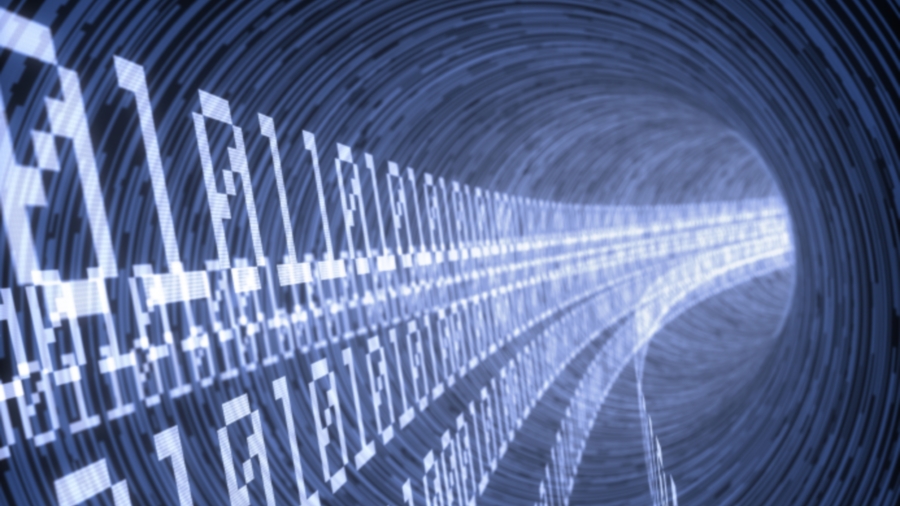Google “Rembrandt Self-Portrait” and you will be treated to an array of images, including the famous “Self-Portrait at Age 34” from The National Gallery. Similar visual compilations follow nearly any arts search, whether for the record-setting David Hockney painting or 6th century statuary, like the “Buddhas of Bamiyan.”
Most of us hardly remember a time before the internet brought the world’s art to any connected device. Moreover, we rarely consider the technology and maintenance behind the growing online collections of artistic and cultural heritage pieces from around the globe.

Threats to art and artifacts drive digitisation
The “Buddhas of Bamiyan” are a cautionary tale. The figures, carved into a cliff in Afghanistan, were dynamited by the Taliban in 2001. Overt destruction is only one of art’s major threats, which range from natural disaster to theft. Just last year, Brazil’s National Museum was destroyed by fire and some 20 million irreplaceable items of scientific, cultural, and artistic interest were lost.
Many organisations are turning to digitalisation to preserve art for the ages, at least in some form. The Tate Gallery, for instance, has made at least 65,000 works available online, the Courtauld Institute is electronically archiving its 3.3 million pieces, and the British Library digitised the 1660 Klencke Atlas, which stands over a head high, among other priceless medieval manuscripts.
Behind all of this activity stands sophisticated technology, housed in data centres that may be cloud-based, on-premises, or in collocated facilities. Data centre maintenance is, therefore, playing a critical role in the arts and humanities.
An ongoing cost consideration
Although Big Tech with big pockets is taking on some of the burden—as with a Google collaboration with The New York Times to preserve its photographic archives—not all players in the cultural space are comfortable engaging in such partnerships, nor are such opportunities always on offer. Digitisation and archiving remain fragmented, with even luminaries like the Smithsonian Institution in Washington, D.C., pursuing their own directions.
Much attention is often given to digitisation milestones and technical advances, such as 3D digitisation solutions or the use of wearable sensors to record the details of dance in ways film cannot approach. Less often publicised are the challenges in maintaining art’s digital incarnations, a cost centre that must be budgeted year after year.
Even cold storage demands upkeep, and the accessible collections most institutions are striving to put at the world’s fingertips require much the same high-availability systems as their private sector counterparts. The barriers for non-profits and arts enterprises in general are, however, much different.
Museums, foundations, academic institutes, studios, galleries, and other arts and humanities organisations almost always money hungry. This means the digital forms of our most precious artworks and artifacts will often reside on older hardware than our spam email. Thus long-term, especially post-warranty, IT hardware maintenance will continue to be an essential contributor to the preservation, security, and accessibility of global treasures. Specific advantages include:

1. Extending Hardware Lifespan
Many art and cultural institutions lack the capital budget to update essential hardware as often as corporations do, and they will often rely on equipment the manufacturer has declared “end of support life.” Alternatively, third party maintenance arrangements then become essential in ensuring this aging storage, server, and networking hardware remains reliable. In addition, strategic upgrades can increase capacity and improve performance at a fraction of the cost of new equipment. Such services provide options for managing a limited capital budget common among government and philanthropy funded organisations.
2. Supplementing In-House Expertise
Arts institutions boast deep benches of specialist professionals, from historians to preservationists, but rarely does the staff run to experts in hardware maintenance. Tapping outsourced providers frees senior leaders from deep involvement in IT maintenance strategy and oversight, which they may be ill-suited to manage. After setting appropriate service levels, they can be hands-off about how expectations are ultimately met, leaving the details to the support provider.
3. Guaranteeing Backup and Disaster Recovery
Digitisation can only “back up” physical collections if the digital records are themselves protected from loss. While many organisations prepare disaster recovery plans, most find it difficult to sustain them as living documents, with processes and off-site data restoration subject to regular testing, assessment, and improvement. This is another area where outside resources, such as Data-Protection-as-a-Service (DPaaS) offerings, are filling in gaps in internal capabilities.
Arts and cultural institutions may soon vie for technology partnerships with the same alacrity as they do research grants. We would suggest that a new day of philanthropy may be upon us, with tech-savvy donors finding ways to endow long-term digitisation and maintenance solutions to keep our world’s treasures safe and accessible far into the future.
Paul Mercina, Head of Innovation at Park Place Technologies
- We've also highlighted the best disaster recovery services
from TechRadar - All the latest technology news http://www.techradar.com/news/backing-up-the-worlds-artistic-and-cultural-heritage
No comments:
Post a Comment